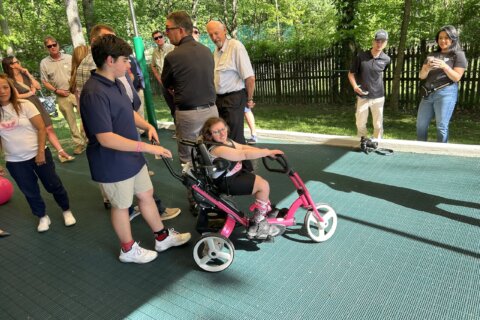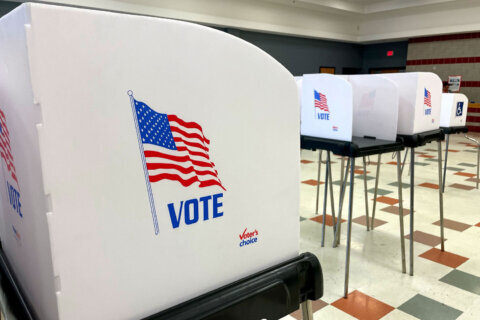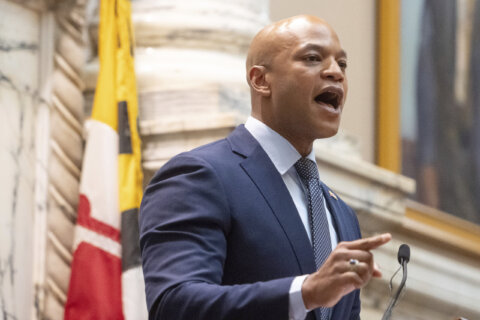Following the 2018 Maryland General Assembly elections, the state legislature became the most diverse and representative of the state’s general population it has ever been, but data collected from the U.S. Census Bureau and the state of Maryland shows that there is still room for improvement.
Capital News Service compared the makeup of the 2021 Maryland General Assembly to the population of Maryland — looking at race, age, gender and political party affiliation — using data collected from the Census Bureau’s 2019 American Community Survey, the Maryland State Board of Elections and the Maryland General Assembly.
Sen. Cory McCray — a representative for Maryland’s 45th district — spoke to the diversity of the General Assembly, noting the various milestones the legislature has made over the past three years.
In 2018, there were more women than ever before elected to the General Assembly, McCray said. Additionally, he said the Congressional Black Caucus makes up more than a third of the legislature for the first time ever.
“When you have a single gender, a single race, a single age group of men making decisions, they’re going to do things that enable themselves to be successful, and other folks are going to be on the menu,” McCray said. “If you’re not at the table, you’re on the menu.”
Another important aspect of increased diversity within the legislature is the visibility of representation, McCray said. He added many of the challenges in poor communities are due to the fact young people don’t see role models, such as doctors, in their day-to-day lives.
“They can’t even envision themselves as the scientists or in STEM and things of that nature because it’s never been embodied and is being removed day by day in their communities,” he said.
But just because it’s the best it’s ever been now doesn’t mean there isn’t more work to be done, McCray said.
The Maryland General Assembly’s membership profile broke down race into four categories: Caucasian, African American, Asian and other.
Census Bureau data shows that 55% of the state population is white, compared to the General Assembly’s makeup of 65% white members. Black and Asian representation is much closer between the state and General Assembly. Black people make up around 30% of both the General Assembly and the state’s general population. Asian representation is a little less in the General Assembly than the state, representing 5% and 6%, respectively.
Of the 186 legislators counted, one person identified their race as “other.” The membership profile does not describe what races count as “other.”
Capital News Service consolidated the American Community Survey’s race categories — excluding white, Black and Asian — to create an “other” category that is comparable to the legislature’s “other” category. This consolidation includes people who identify as American Indian and Alaska Native and Native Hawaiian and other Pacific Islander, and it makes up about 9% of Maryland’s population.
Maryland’s population in accordance to gender is split almost down the middle, with 52% female and 48% male. In the General Assembly, the ratio gets much larger with 41% female and 59% male.
And when looking at the state Senate separately, the ratio gets larger again, with twice the number of male senators as female senators. The House is most representative of Maryland as a whole, with 56% male and 44% female.
Sen. McCray noted that every statewide elected position is filled by men. This includes attorney general, governor and other influential positions. The fact that a single woman hasn’t been elected into one of these positions left him frustrated, especially given that women make up half the population.
“We definitely are falling short,” McCray said.
When looking at five other states with similar race and gender demographics, Maryland’s legislature is more representative of its state’s general population than the other examined states.
Census data shows Delaware, Georgia, Louisiana, North Carolina and South Carolina are similar to Maryland demographically, but the legislatures in those states are more predominantly white and male.
When looking at an age breakdown, most legislators in the General Assembly are between 35 and 64 years old. There are only 11 members of the General Assembly — 6% — that are between the ages of 20 and 34 years old. Twenty percent of Maryland’s general population are in this age group.
But District 30 Sen. Sarah Elfreth — currently the youngest senator — says age differences aren’t felt in the General Assembly. There’s a feeling of seniority in terms of positions, but they all rely on each other and value each others’ opinions.
“We have some very real challenges in these jobs and in our districts and we just need to lean on each other, people who kind of similarly understand the role, and to work through those challenges,” Elfreth said.
Where the General Assembly is most similar to the state is political party affiliation.
According to the Maryland State Board of Elections, 55% of Marylanders are registered as Democrats, 25% are registered as Republicans and 20% are affiliated with some other political party.
In the General Assembly, 69% of legislators identify as Democrat, and 31% identify as Republican.







